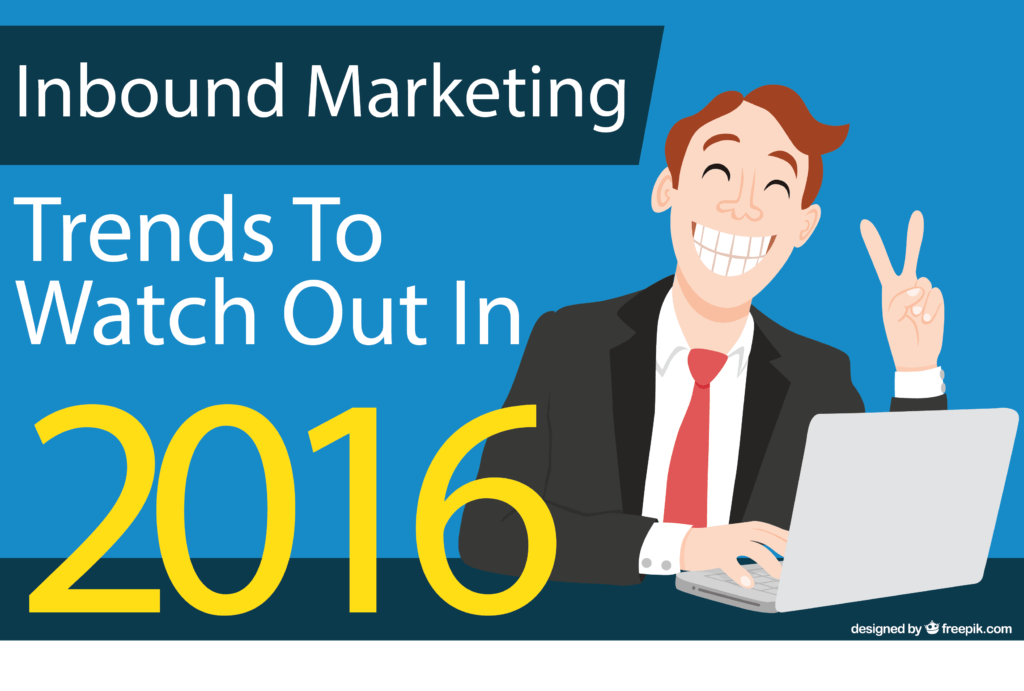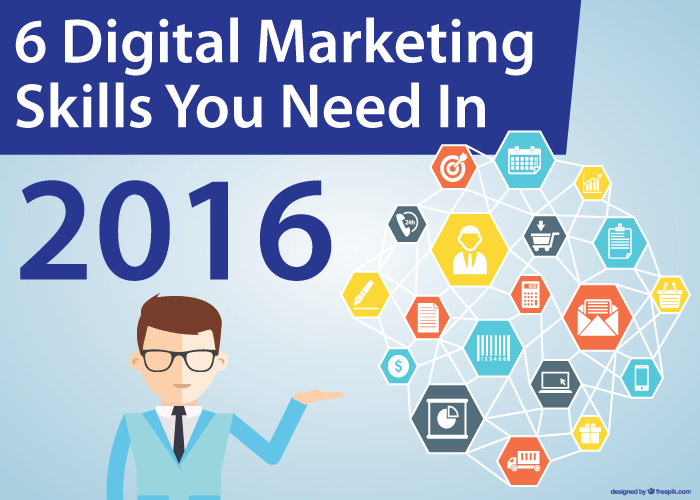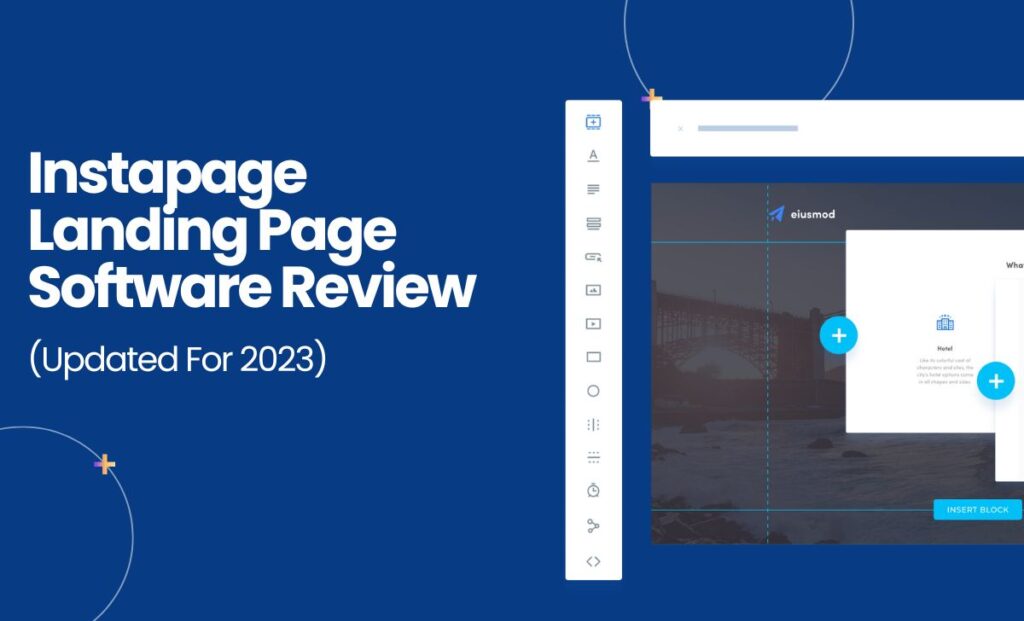
As 2015 comes to an end I couldn’t help but reflect what an amazing year this has been in terms of inbound marketing adaption. Inbound marketing is getting recognized by more and more businesses throughout the world. In my own city of Toronto I have seen new businesses pushing for email list building, constant blogging and paid advertising to generate more revenue.
I understand that you may be seeing this infographic throughout 2016 so I decided to be as descriptive as possible when I talk about some of the best inbound marketing trends to watch for in 2016. I highly recommend that you jump on the boat with these trends as fast as you can because I assure you they are going to be the marketing pillars that most successful brands will follow for their 2016 campaigns.
Content That Looks Visually Stunning Will Shine
Remember those days when we used to say that “content is kind”. In 2016 we need to tweak that phrase and say “great looking content is king”. It’s all about design and how engaging a piece of content looks compared to the actual context of the article. If you have been following the popular blog Huffington Post then you surely must know their new segment called Highline where they focus mostly on visual storytelling. Highland is just one of many examples all over the internet where content publishers are focussing on new and engaging way to captivate the user’s attention.
If your business blog is all about text with a few images slapped onto it then I suggest you rethink the content publishing strategy in 2016. If you are using WordPress like me then use a webpage builder like Visual Composer or Divi.
80-20 Rule Of Blogging Reassured
A blog consists of several categories and different types of posts under each one of them. You should be familiar with the 80-20 rule if you are running an active business blog. According to the 80-20 rule nearly 80% of all your organic traffic will come from 20% of your blog posts. As a matter of fact if you ask any successful blogger how they are getting such awesome conversion rates then 9 out of 10 people will suggest it’s because of their pillar content generating a constant stream of new leads.
In 2016 Google algorithms are going to get more sophisticated than ever. There is no formula to rank your content higher anyone. It’s all about coming up with informative 2000-3000 word articles that solves a problem in your industry. If you can do that then these pillar articles will be the leader in generating the majority of your organic traffic.
Take a look at the screenshot from one of my blogs that I don’t update anymore. I haven’t updated my blog for a year but 80% of all organic traffic is driven by the first 5 articles or so. The website probably has 500 article in it. For your inbound success now is the time to focus on long form content than ever before.
Exit Intent Conversion Optimization
The headline might sound fancy but exit intent is probably going to be the most adopted conversion technique in 2016. If you are planning to use exit intent then there are lots of softwares like OptinMonster, Leadpages etc. that allow you to show a popup message when users are leaving your website by tracking your mouse click.
The best way to use exit intent technology is to make the entire experience more personalized. Here is an example of how you might use exit intent technology on your website to skyrocket conversions.
Bonus: Simple Landing Page Hacks To Skyrocket Conversions
Email Series Key To Inbound Success
A lot of companies are re-focussing their effort on email marketing. Email marketing is still the number one method for lead nurturing and conversion. Hopefully you have been collecting emails on your blog or website but it’s what you do with your emails that matter the most.
In 2016 email marketing is all about educating or enticing your customers with an email series. Each series can last for weeks while you focus on one of the following strategies:
– Freebies
– An educational series
– Case study update
– Personalized lead nurturing
The hardest of the 4 topics mentioned above is personalized lead nurturing. This involves designing a campaign that not only looks personal but also convinces the user in believing that someone on the other end hand crafted the email. Softwares like Hubspot and Infusionsoft allows you to tailor the email marketing experience based on whether someone actually opened your email address or interacted with a particular button on your website. Personalized lead nurturing has proven to give higher conversion rate and will continue to do so in 2016.
Smarketing Is The Future of Marketing
Yes, I didn’t spell it incorrectly. Smartketing is how companies are brining together their sales and marketing team to work with each other and drive more conversions. I first heard the term Smarketing when I was taking my Hubspot inbound marketing test and it is being widely adapted by many companies today. In 2016 smarketing will become an essential tool for your inbound success.
A lot of marketers interpret smarketing differently and for right reasons. The key element for any smarketing campaign is to use a CRM that transfer a prospect from the marketing to the sales team with as much information and coordination as possible so that when the sales person is trying to close the lead he/she already has a fair idea of the lead’s history through all of your marketing channels.
Smarketing also allows the sales and marketing team to evaluate their ROI in a justified environment. It also enhances the overall user experience with your company. If you are thinking about trying the Smarting technique with your own business then I suggest you give Hubspot’s free CRM a try.
Proving ROI In Inbound Marketing
Proving your return on investment for your inbound marketing efforts is bar far the number one challenge faced by marketers today. However, there are new and innovative solutions coming up to address this key issue. Unlike other forms of marketing inbound is all about creating value for any prospect from the first time they interact with your brand to becoming a customer and even beyond.
According to a survey of around 800 marketing professionals working on various companies throughout the globe, most of them claimed that their companies spend 50% of their marketing budget into content creation. These content can be anything from a free case study to weekly blog articles for your business. Generating leads from these content is a grinding process that takes a while. If you are familiar with SEO then you know that for a blog post to start ranking in SERP’s high enough that people will actually click it takes weeks, sometimes months. Also, the overall blog quality and other factors play a role in your organic position.
Getting to the first page of Google is just the beginning of the inbound journey. In order to measure your ROI you need to decode the Google webmaster account, analytics account, email marketing tracking and other data while figuring out how your prospect first interacted with your brand before becoming a customer.
To be honest proving ROI for online advertising using Google Adwords, Facebook Ads and other service is much easier. Both Google and Facebook provide conversion tracking code that can be installed on your website so that you can track the number of conversion vs the number of clicks and other useful metrics. The real challenge lies with proving the investment in your content marketing from a broader perspective.
Mass Adaptation Of Marketing Automation
Marketing automation has been around for a while and its only going to be embraced more and more by future marketers. In 2015 marketing automation was one of the most trending topics in our inbound community. 2016 will feature mass scale adoption of marketing automation by marketers. A good place to start marketing automation is to use a marketing system like Hubspot or Infusionsoft. If you are using a lot of individual apps then connect the services using Zapier.
I found an incredible article featuring a list of marketing automation statistics. Adoption of marketing automation is 11 times more than it was in 2011. Nearly half of all CMO’s are expected to increase their budget for marketing automation in 2016. The reason why marketing automation is gaining traction is because of the advancement in how you can track and connect with users interacting with your website.






1 Comment
Shirsendu
Anything on marketing automation?